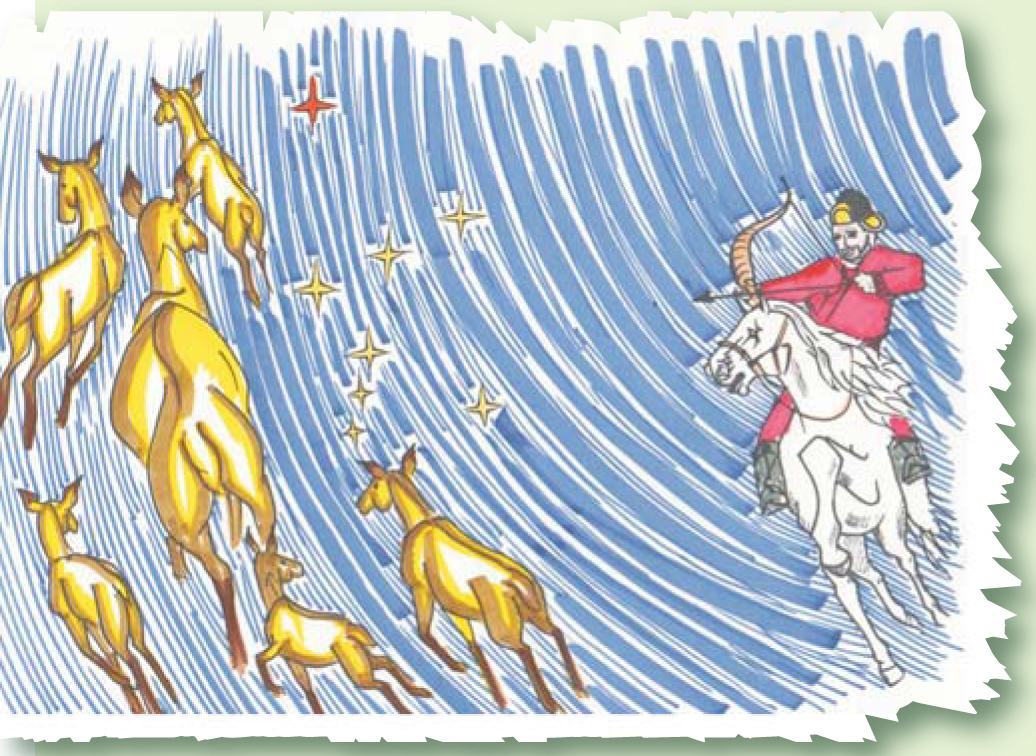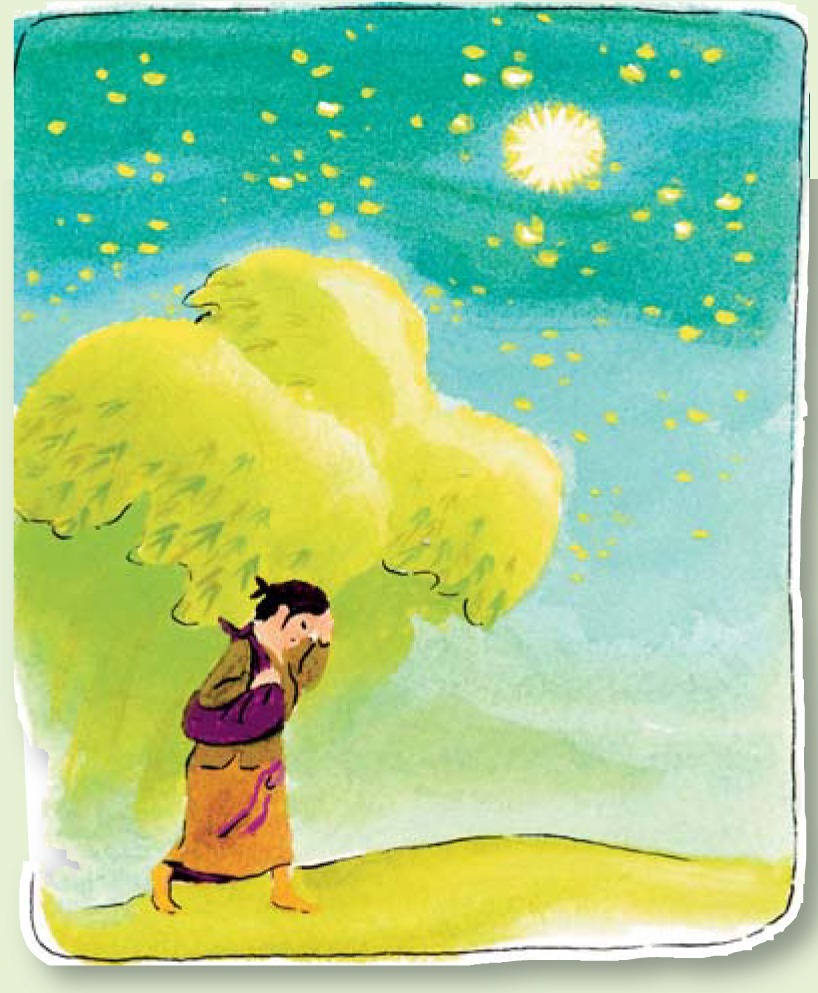Gathering Asian sky stories
DOI: 10.1063/1.3226708
The three stars known in the West as Orion’s belt represent, according to various myths of the East, a bamboo shaft or three deer that have escaped a hunter. Such stories of the heavens are being gathered in an International Year of Astronomy 2009 project, Asian Myths and Legends of Stars and the Universe, generally called Stars of Asia.
“Even in Japan, Indonesia, and other countries in Asia, the stories told in planetariums are all Greek and Roman,” says Norio Kaifu, an astronomer at the Open University of Japan who heads up the Stars of Asia project. “But we have interesting stories too.” China, India, the Pacific Islands, and other countries “have quite different stories, but we can also see similarities” among them, Kaifu says. The myths and legends tell of the origins of the stars, planets, eclipses. Milky Way, and other celestial objects and events. They hark back to Hinduism, Buddhism, Islam, or to Greek or other origins; some legends are based on true stories, and many are connected to the gods or have a moral.
Take the bamboo shaft. In a legend from northern Thailand, a woman symbolically separates her son from his wife by placing a bamboo shaft between their graves. The red star (Betelgeuse) that is Orion’s shoulder in the western constellation is Upem, the bride, and the bright blue star (Rigel; Orion’s leg) on the opposite side of the bamboo shaft is Khun Sarm Lor, the groom. In the Japanese myth “Two Heavenly Sisters,” Orion’s belt is the bamboo pole used by a girl to carry two buckets of water. Chased by a devil, the girl and her older sister escape by climbing a rope to the heavens. The older sister becomes the Moon, and the younger sister’s remaining leg—the devil got the other one—sticks out from her kimono, forming what in the West is known as Orion’s scabbard. In Mongolia, legend has it that a herd of deer ran into the sky to escape a hunter and became the red deer constellation (see picture above). Betelgeuse, according to the legend, is the hunter’s arrow; the star looks red because the arrow was bloodied by a deer it wounded. The three stars at a slant below the “belt” deer are fawns.

STARS OF ASIA EDITORIAL BOARD

In Vietnam, the story goes, the morning and evening appearances of Venus are two brothers, Cung and Coc (see illustration, top right). After their parents died, Cung took care of Coc. To guard his sister-in-law while his brother was away, Coc dug a hole through the wall and slept with his hand on her belly. When she became pregnant, he left in fear of his brother. Coc walked westward and at sunset died at the foot of a high mountain. Cung’s wife maintained Coc’s innocence, but only when she gave birth to a hand did Cung forgive his brother and go in search of him. He headed east and died at sunrise at the foot of a high mountain. Cung’s wife went in search of her husband. She ran until she couldn’t move her legs. Then she died. Coc is the evening star. Cung is the morning star. And Cung’s wife is a shooting star. The hand is the constellation Taurus; its duty is to protect those three spirits. The story is especially meaningful, says Nguyen Quynh Lan, a cosmologist at the Hanoi National University of Education, because it not only explains the morning and evening stars, “but also shows the love between members of a family.”

NGUYEN CONG HOAN/HANOI UNIVERSITY OF ART

A legend in Nepal tells of the origin of the North Star. After being punished by the second wife of his father the king, the five-year-old Dhruva ran to his mother and asked who was more powerful than a king. She answered Lord Vishnu. Walking to the end of the northern sky, Dhruva thought only of Vishnu. Eventually Vishnu felt the strength of Dhruva’s meditation. He turned the boy into a bright star and placed him high in the sky, away from jealousy and evil; Dhruva became the North Star, which, like the meditating boy, barely moves. Vishnu also turned seven sages who had protected Dhruva during his meditations into seven stars, which he placed near the North Star. They form what in Nepal is known as Saptarshi and in the US as the Big Dipper.
“Most of the stories we have collected in Nepal are local versions of stories from the Puranas,” a set of Hindu religious texts, says Samanta Acharya, a student at the Institute of Engineering in Lalitpur who is working on the Stars of Asia project. “The story of Dhruva is famous in Nepal, India, and some other subcontinental countries.” Elsewhere, too, the stories were collected from both written and oral accounts. For example, in Thailand, astronomy-related myths were culled from a broader set of stories collected from elders in rural villages. In Malaysia, a national open competition was held to gather myths and legends. And in Vietnam, says Lan, “most of the stories were already written. Some I was told when I was small. I read the legends and myths from books and my memories and then translated them into English.”
Fifteen regions are contributing to the collection. They are Australia, Bangladesh, China, Hong Kong, India, Indonesia, Japan, Malaysia, Mongolia, Nepal, the Pacific Islands, South Korea, Taiwan, Thailand, and Vietnam. The astronomers in charge of the effort are planning to publish a book of legends next year. “The legends explain the astronomical phenomena by belief and imagination,” says Lan. “This project is a great lesson for people who want to learn more about both astronomy and culture.”
More about the Authors
Toni Feder. 1 American Center for Physics, One Physics Ellipse, College Park, Maryland 20740–3842, US . tfeder@aip.org
